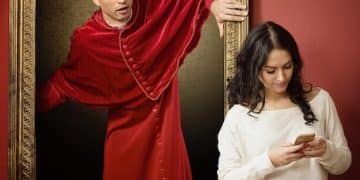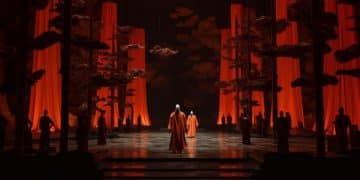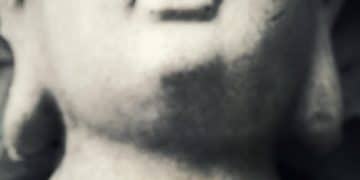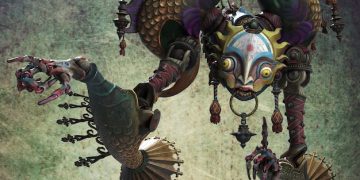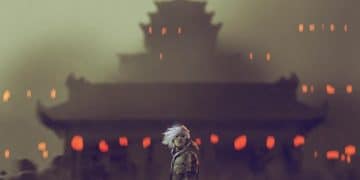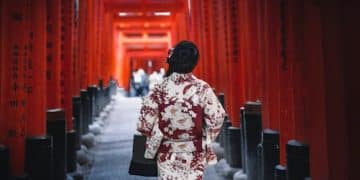Chinese Drama Historical Accuracy: Fact vs. Fiction in Period Dramas
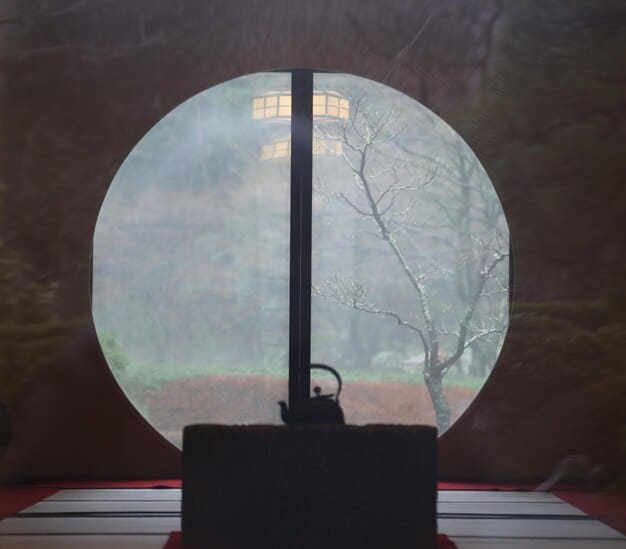
Advertisements
Chinese drama historical accuracy varies, with period dramas often blending real events and figures with fictional narratives for entertainment, requiring viewers to distinguish between fact and creative license.
Chinese period dramas offer a captivating glimpse into the past, but how much of what we see on screen is actually true? Understanding Chinese drama historical accuracy requires discerning fact from fiction, and appreciating the artistic liberties taken for storytelling.
Anúncios
The Allure of Chinese Historical Dramas
Chinese historical dramas have exploded in popularity, captivating audiences worldwide with their intricate costumes, compelling storylines, and glimpses into China’s rich past. But how much of what we see on screen reflects actual historical events?
These dramas often transport us to different dynasties, showcasing imperial court intrigues, military conquests, and the lives of ordinary people. However, it’s crucial to remember that these are, first and foremost, works of entertainment.
Anúncios
The Blend of Fact and Fiction
Many historical dramas are inspired by real historical figures and events, but they often embellish or alter details for dramatic effect. This can range from minor changes in character personalities to significant shifts in historical timelines.
Understanding where the line blurs between reality and imagination is key to appreciating these dramas without misinterpreting history.
- Character Portrayals: Dramas may simplify or exaggerate the personalities and motivations of historical figures for narrative clarity.
- Romantic Subplots: Fictional romances often intertwine with historical events, adding emotional depth but not necessarily reflecting reality.
- Simplified Conflicts: Complex political and social issues can be streamlined to create a more compelling and easily digestible storyline.
Ultimately, Chinese historical dramas aim to entertain, and some changes happen for the sake of a more compelling narrative.
Historical Figures: Portrayal vs. Reality
One of the most fascinating aspects of Chinese historical dramas is their portrayal of real historical figures. But how accurately do these dramas depict the personalities, actions, and impact of these individuals?
It’s essential to approach these portrayals with a critical eye, recognizing the creative liberties that writers and actors often take.
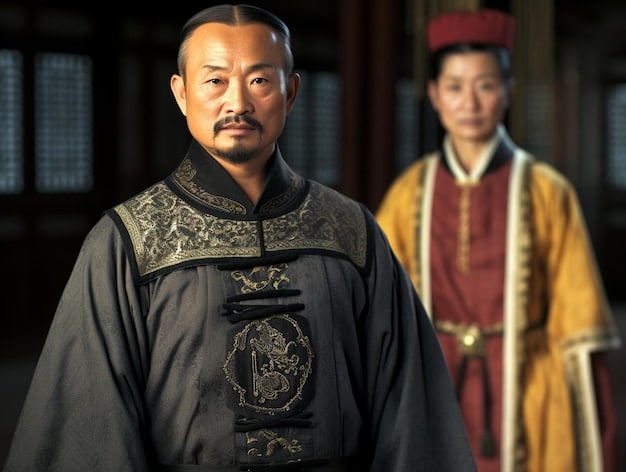
Emperors and Empresses
Emperors and empresses are central characters in many historical dramas, often depicted as either wise and benevolent rulers or ruthless and power-hungry tyrants. However, the historical reality is often more nuanced.
Dramas may focus on specific aspects of a ruler’s reign, exaggerating their successes or failures for dramatic effect.
- Emperor Taizong of Tang: Often portrayed as a wise and benevolent ruler, but also known for his ruthlessness in seizing power.
- Empress Wu Zetian: Depicted as both a brilliant strategist and a cruel manipulator, reflecting the conflicting accounts of her reign.
- Emperor Qianlong of Qing: Celebrated for his prosperity and cultural achievements, but also criticized for his autocratic rule and literary inquisition.
Historical drama can make heroes out of villains, or demons out of saints. It is important to consider all sides of the story.
Costumes and Props: A Visual Feast with Imperfections
The elaborate costumes and meticulously crafted props are key elements that contribute to the immersive experience of Chinese historical dramas. These visual aspects play a crucial role in transporting viewers to different historical periods.
However, while the overall impression may be stunning, the accuracy of these details can vary depending on the drama’s budget, research, and artistic goals.
The Evolution of Hanfu
Hanfu, the traditional clothing of the Han Chinese people, encompasses a wide range of styles that evolved over centuries. Dramas often showcase these different styles, but sometimes with historical inaccuracies.
Common errors include using anachronistic designs, mixing elements from different periods, or simplifying complex garment construction.
- Color Palettes: The use of colors may not always reflect historical regulations, which often restricted certain colors to specific social classes.
- Fabric Textures: The types of fabrics used in dramas may not accurately replicate the materials available during the historical period.
- Hair Ornaments: The styles and materials of hair ornaments can sometimes be anachronistic or deviate from archaeological evidence.
Accuracy in these areas is often secondary to the overall visual impact and appeal of the program but errors can often be glaring to a more discerning viewer.
Courtly Life and Rituals: Drama vs. Protocol
Chinese historical dramas often depict the intricate rituals and complex social hierarchy of imperial court life. From elaborate ceremonies to subtle power plays, courtly life provides rich material for dramatic storytelling.
However, these depictions are often fictionalized or simplified, and do not always accurately reflect the strict protocols and customs of the time.
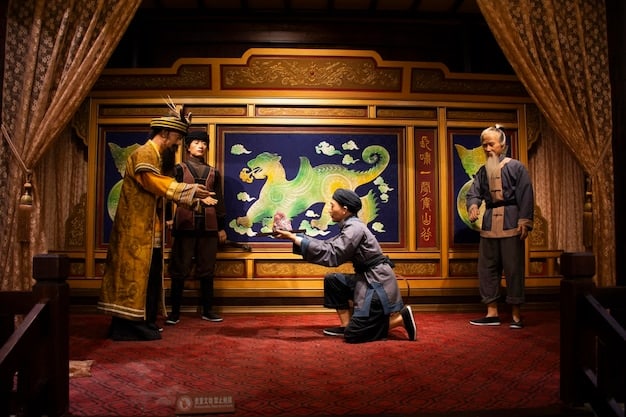
The Etiquette of the Emperor
The emperor held a central position in the imperial court, and interactions with him were governed by a strict set of rules. Dramas often portray these interactions, but sometimes with artistic license.
Common deviations include simplifying the complex forms of address, omitting certain ceremonial gestures, and exaggerating the level of intimacy between the emperor and his subjects.
Beyond simplification, common deviations include changing ceremonial gestures, and exaggerating the level of intimacy between the emperor and his subjects.
Concubines
While love abounded in some scenarios for the emperors and their concubines, it was often more political in nature than anything else.
Concubines can often be seen trying to vie for the attention of the emperor, but their true motive may be to secure their family wealth, for example.
Ultimately, the level of accuracy in this department can vary greatly, with some dramas striving for historical authenticity while others prioritize entertainment.
Military Strategy and Warfare: Tactics on Screen
Many Chinese historical dramas feature scenes of military strategy and warfare, showcasing epic battles and cunning tactical maneuvers. These scenes can be visually stunning and exciting.
However, it’s important to remember that military tactics and warfare technology were far more complex than what can be easily represented on screen.
Weapons and Armor
The weapons and armor depicted in historical dramas are often stylized or simplified, and don’t always reflect the actual technology of the time. For example, weapons may be made to look flashier, and armor may not offer the protection true armor did.
Common errors include using anachronistic designs, misrepresenting the materials used, or exaggerating the effectiveness of certain weapons.
- Sword Design: Sword designs often vary based on personal preference, but many scenes from these dramas use swords that are not historically proper.
- Armor Materials: While armor materials were important, many try to take shortcuts, but the materials chosen would compromise functionality.
- Siege Warfare: Dramas often depict epic sieges, but may oversimplify the complex logistics and engineering involved.
It’s unrealistic to expect it to be a perfect copy, but some people feel this is necessary to create a properly compelling product.
Social Life and Customs: Reflections of Daily Life
Chinese historical dramas often offer glimpses into the daily lives and customs of people from different social classes. From elaborate banquets to humble village scenes, these depictions can provide insights into the social fabric of the past.
However, as with other aspects of historical representation, these depictions are often idealized or romanticized.
Food and Drink
The food and drink depicted in historical dramas can be visually appealing, but may not always accurately reflect the culinary practices of the time. Modern food is often easier to bring in for sets and can look more visually appealing.
Common errors include using ingredients that were not yet available, misrepresenting cooking techniques, or exaggerating the opulence of meals.
Ultimately, Chinese historical dramas provide us with a distorted view of history, and they show a romanticized view from beginning to end.
| Key Aspect | Brief Description |
|---|---|
| 🎭 Fact vs. Fiction | Dramas blend historical events with creative narratives. |
| 👑 Historical Figures | Portrayals often simplify or exaggerate real personalities. |
| 👗 Costumes & Props | Visually stunning, but may contain historical inaccuracies. |
| ⚔️ Military Tactics | Battles simplified; tactic complexity often reduced. |
Frequently Asked Questions
▼
Not entirely. They blend historical events with creative narratives for entertainment. Details are often altered or embellished to create a better story.
▼
Historical figures are often simplified or exaggerated. Dramas prioritize entertainment, which will involve reducing complexity.
▼
Costumes and props can be visually stunning, but this does not mean accuracy. Some pieces are stylized or simplified.
▼
Military tactics are often simplified for these dramas. Additionally, many liberties must be taken with weapons and armor to facilitate filming.
▼
No. While they can provide an overview, they should not be seen as an authoritative history. These dramas are meant for entertainment.
Conclusion
Chinese historical dramas offer a rich and captivating form of entertainment, but it’s essential to approach them with a critical eye. By understanding the blend of fact and fiction, we can appreciate these dramas for their artistic merits while maintaining a clear understanding of historical reality.
